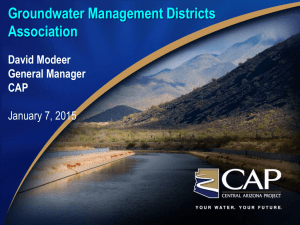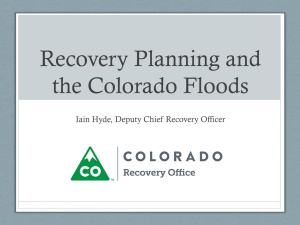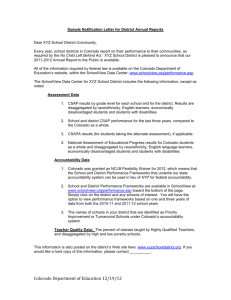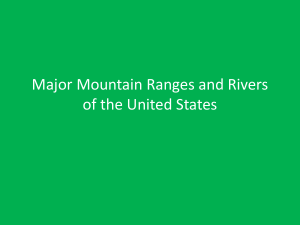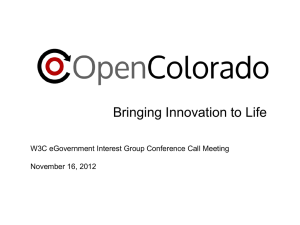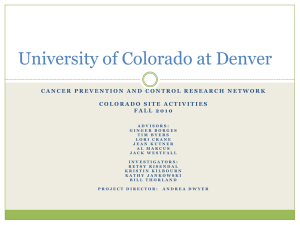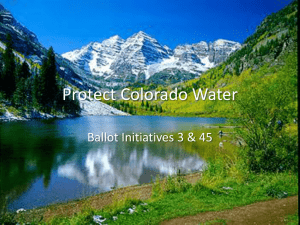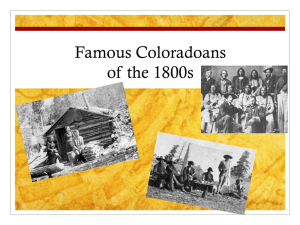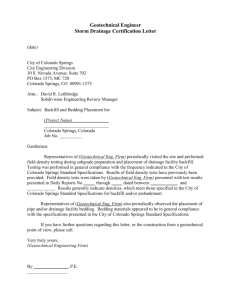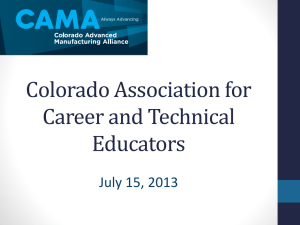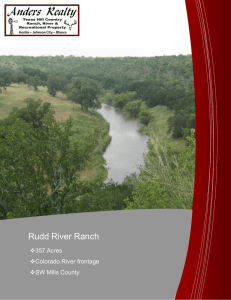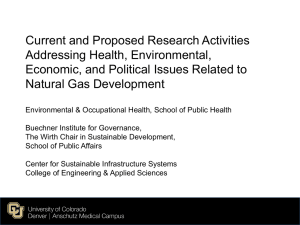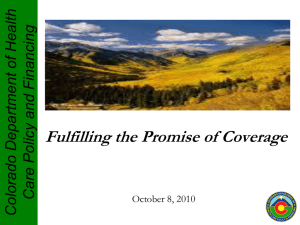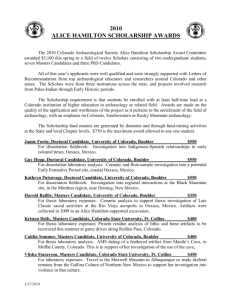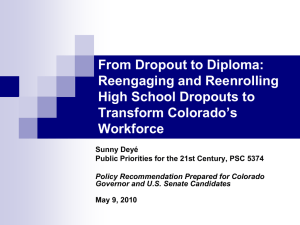GMD 3 Presentation - Kansas Water Congress
advertisement
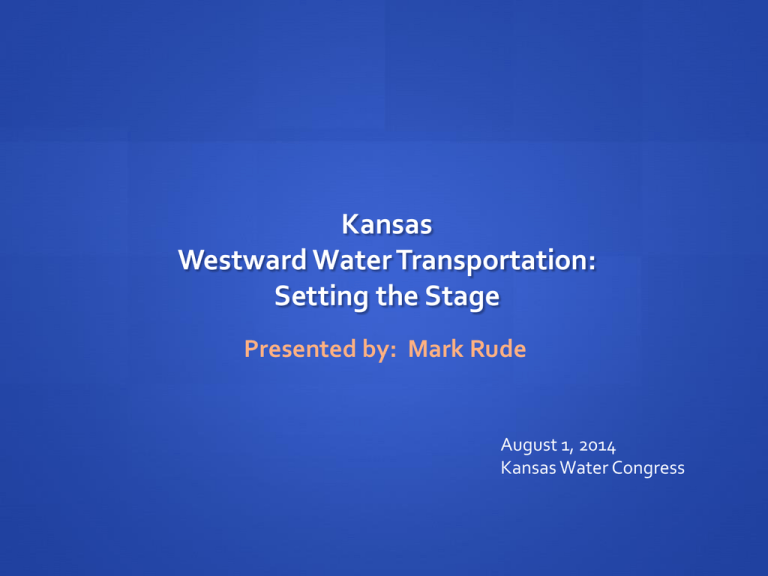
Kansas Westward Water Transportation: Setting the Stage Presented by: Mark Rude August 1, 2014 Kansas Water Congress Missouri River Supply : Missouri River Omaha (El. 1080) Denver (El. 5280) Kansas City (El. 700) Colorado River Facts Phoenix More secure water rights with about 1.6m af/year from Colorado River; many of legal disputes with Indian tribes have been settled Central Arizona Project canal system and reservoir storage Las Vegas Area Depends on Colorado River for nearly 90 percent of the valleys potable water (300,000 AF/year) Lake Mead has dropped more than 100 feet since 2000 Southern Nevada Water Authority is proposing to build 285 mile pipeline at a cost of $2B Concerns about Over-drafting aquifers from 6 valleys east of Las V170,000 jobs Average Annual Colorado West Slope Trans-continental Diversion (Current): Provides ¾ of Front Range Water Supply today Approx. 738,000 AF/Yr via Front Range Where will the water come from? The Pressure: Western Irrigations Issues Becoming Eastern US Issues And The Issue: Growth in the Western U.S. will outstrip available water supplies. More Public-Private Partnerships and collaborative efforts are required. Ag Conversions Conservation Other sources Socio-economic Drivers 2010 Colorado Population- 5.0M Projected 2040 Colorado Population- 7.9M Projected California Population by 2050: 60 M Increase Colorado Water Demand Forecast- 190,000 t0 690,000 AF/yr Will result in continued conversion of ag lands 80 Percent of Population resides in Front Range with 20 percent of Colorado’s water supply (“80/20 Situation”) Approx. 740,000 AF/yr diverted from West Slope (About 570,000 AF to Platte Basin) Increased dependence on Colorado River Supplies Intensified pressure on rural communities to protect water Colorado River Basin is forecasted to have more than 3.2M AF/Yr shortage by 2060 Source: Colorado Conservation Trust (2012) and others The Setting Water economics are at the “Tipping Point” where the cost of water supports the development of new, imported supplies Growth in in the Western U.S. is at the threshold where conservation and management practices cannot satisfy demands without severely damaging agricultural industries and economy Climate Shifting will strain available physical supplies and pit Growth advocates vs. Environmental groups The Setting Precipitation for Water Missouri River Source: De-minimus flow impacts for high flow Water supply advantage vis-à-vis climate change Issues relate primarily to Flood Control and Habitat Restoration Limited (but important) barge transportation commerce Politics Omaha Kansas City The Colorado River The Colorado River provides drinking water for 36 million Americans, supplies irrigation for 15 percent of the nation’s crops and supports a $26 billion recreation economy that employs 250,000 people. Findings of Bureau of Reclamation 2012 Colorado River Study Options Considered by Bureau of Reclamation The Colorado River • 2014: The Bureau of Reclamation cut the flow of water into Lake Mead to a historic low. The agency predicts a drop of 18 feet by June and 30 feet by June 2015, when water levels could approach an all-time low. • 2015: Lake Mead could dip to a level so low that there would be a major decline in power generation at Hoover Dam. That could destabilize the energy market and mean more expensive bills for 29 million people in Nevada, Arizona and California. Upstream, declining water levels in Lake Powell, which straddles the Utah-Arizona border, could cut off power production at Glen Canyon Dam as early as winter 2015, affecting the power supply and pricing in six states. • 2050: The Colorado River could be up to 10 percent drier than today. Communities could shrink because there isn’t enough water to support residents. Fires could rip through towns because of a lack of water to fight them. Lawns could be limited to the extremely wealthy. Farms could go brown and barren, and a recreation industry dependent on the river could go dry. Missouri River Supply : Missouri River Omaha (El. 1080) Denver (El. 5280) Kansas City (El. 700) Kansas Kansas is likely to see more water rights changes and transfers in the future. They may range from a simple request to change the point of diversion of a small well a few feet to a major transfer of water out of state that would involve the Water Transfer Act as well as the law of another state. For Transfers through a High Plains State, How favorable is Kansas? . Which state to host Water Transportation? Open Discussion

